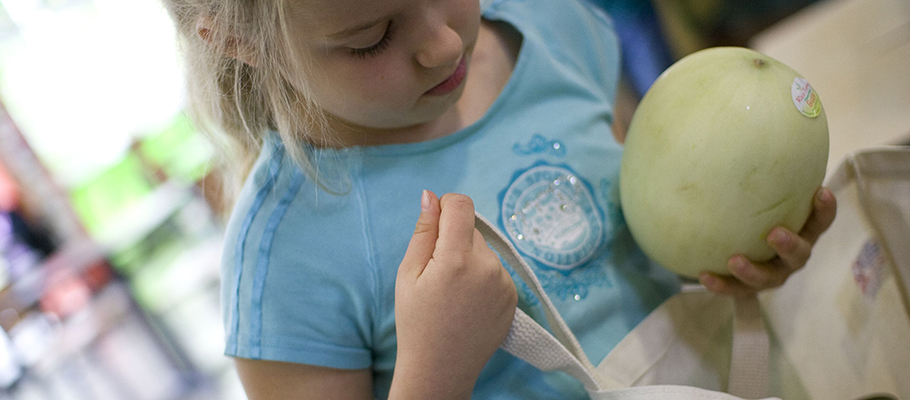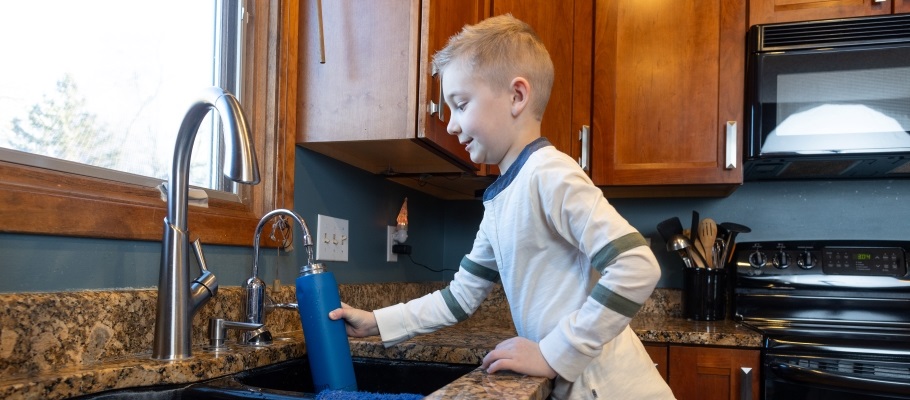Small things do add up. If you’re looking to start or reboot your low-waste lifestyle, here are some simple, yet impactful, waste-reduction tips to make sustainability part your 2025 routine.
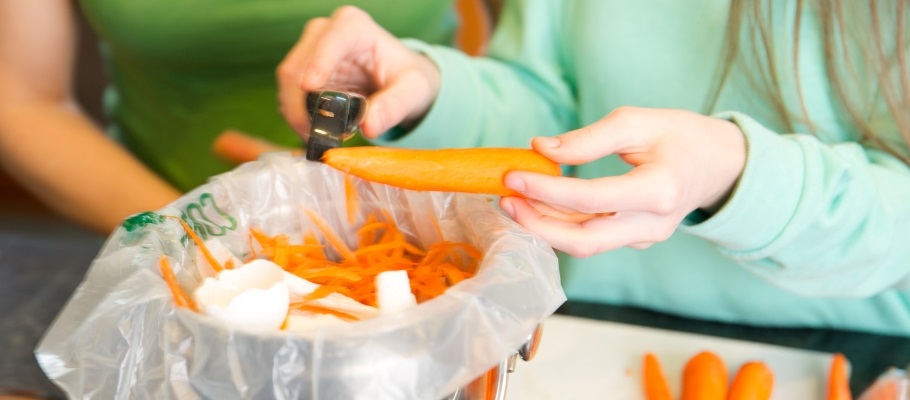
Compost food scraps
Food scraps make up almost 25% of the trash in Hennepin County. Don’t let your food scraps go to waste when they can be recycled and live another life as compost. Here’s how:
- Throw those food scraps in a separate container in your kitchen
- Bring those scraps to your curbside bin, a commercial compost site, or a backyard composting bin
- The composted material lives again!
Visit the Hennepin County resources for backyard composting and organics recycling for more tips and info on where curbside organics recycling service is available and how to sign up.
Switch to reusable shopping bags
Keep a few reusable grocery bags near the door or in your car to ensure you always have them when you go shopping. Don’t forget the reusable produce bags: You can use a mesh bag for produce to avoid the single-use plastic produce bag.
Why bother? In addition to the obvious waste they create, plastic grocery and produce bags can cause big problems at facilities that sort your recycling, so they should never be put in your recycling cart at home. Bring them to a retailer that recycles plastic bags.
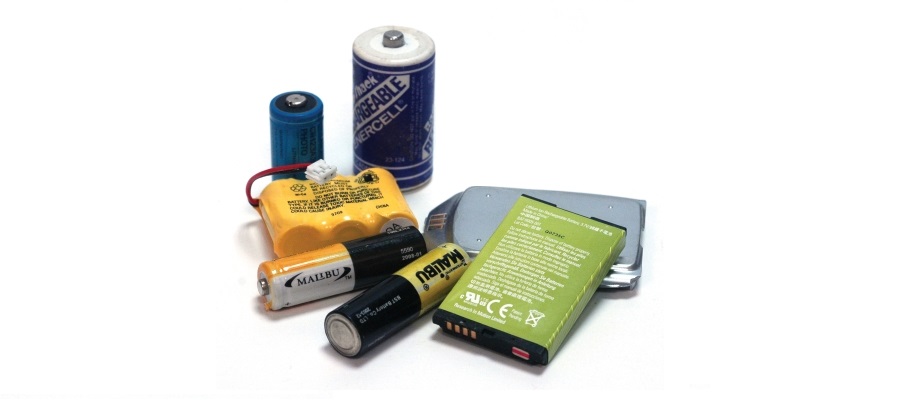
Use rechargeable batteries
Batteries make our daily lives more convenient. Rechargeable batteries cut back on waste and can perform well in high drain devices. Rechargeable batteries can be recharged hundreds of times and then recycled. They can be used in power tools, cellphones, laptops, portable chargers and toys.
Disposal: Once they are used up, remember to dispose of them properly. Batteries may catch fire and be very dangerous when they are thrown in the trash. Bring them to a Hennepin County Drop-off facility.

Repair items instead of replacing them
Many household items that seem broken can be fixed relatively easily. Good candidates for repair include small electronics, fans, lamps, furniture, clothing, bikes and other household goods.
Pro tip: Often, one of the first steps in repairing an item is overcoming the fear of taking it apart. Remember, the item is already broken, so there’s no harm in trying to fix it!
Options for repairing items include:
- Fix-It Clinics: Hennepin County offers free monthly Fix-It Clinics where residents can get household items fixed and learn valuable repair skills.
- Online tutorials: Search online for specific tutorials or check out iFixit.
- Repair shops and contractors. Search for a local one that specializes in repairing your item. Search the Choose to Reuse directory to find them near you.
Donate unwanted items
Keep your durable goods out of the trash. Donating is a great way to give your items a second life.
Designate a spot in your home to put everything you’ll sell or donate. Some people keep a box or a bag handy and, when it fills up, get ready to donate.
Options for getting rid of your useable goods include:
- Drop off your goods at local thrift stores and reuse retailers. Find a place to donate near you on the Choose to Reuse directory. Make sure your items are clean and usable, and double check that the item is accepted by the store before you make the trip (especially for large items). Many stores offer a coupon or tax receipt for donating your items.
- Post online: List your items on sites like Craigslist, Facebook Buy Nothing or sale groups, Nextdoor, and Twin Cities Freecycle. Sites like these may be useful for getting rid of larger items that would be a hassle to move or things you don’t need to get rid of immediately. You can work out a pickup arrangement with potential buyers.
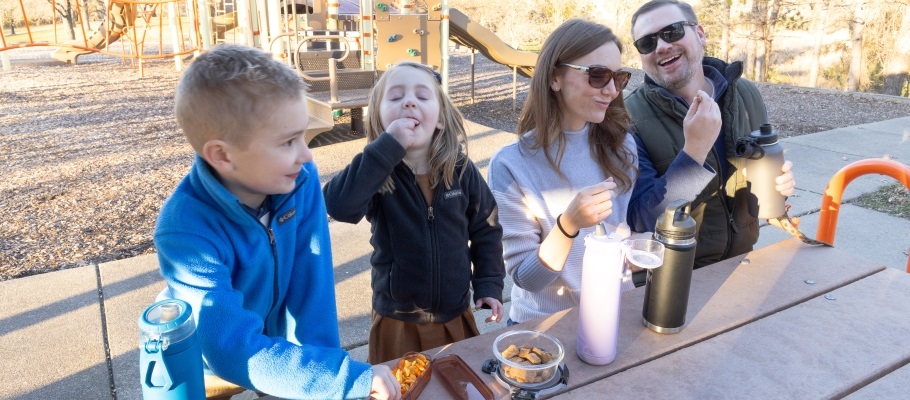
Make your own snack mixes
Amid the hecticness of juggling school, friends and your job, single-serve, plastic-wrapped snacks might be something you grab to refuel and save time. You can reduce the waste you generate by snacking on unpackaged fruits and veggies or prepping your own portions in reusable containers.
You can even keep some easy-to-store, long-lasting snacks like nuts, granola or dried fruit in your backpack as a backup for when hunger hits unexpectedly. There are lots of alternatives to packaged convenience foods that are lower cost, lower waste and often healthier.
Use reusable water bottles
Choose refillable metal water bottles over water in plastic bottles. Your investment in reusable bottles will last you many years!
Tap water is safe: According to the Minnesota Department of Health (MDH), there is no reason to believe that bottled water is safer than tap water. The MDH regularly tests public tap water for safety. The EPA requires the results of this testing to be made available to the public.
And if you’re watching the bottom line: Tap water is also cheaper than bottled water.
Use a reusable coffee pod
If you already have a machine, try using reusable pods instead, which are now widely available in stores and online.
Single serve coffee makers create a lot of waste with no recycling option. While you can pull apart the little cup and compost the grounds, no area recyclers accept the plastic or foil lid.
Cheers to you in 2025!
Best wishes on your low-waste journey this year. Find more sustainable lifestyle tips on our website.
